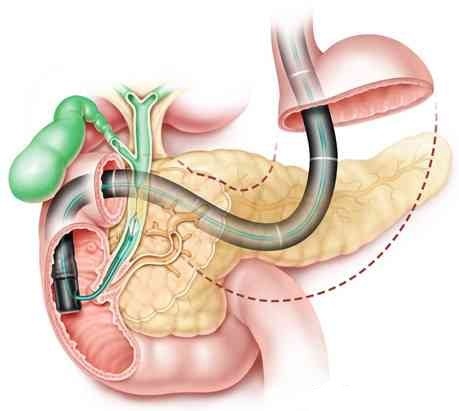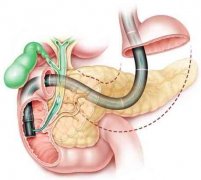 急性胆源性胰腺炎关乎老年患者的不良预后:一项倾向评分匹配分析
目的和背景:
急性胆源性胰腺炎关乎老年患者的不良预后:一项倾向评分匹配分析
目的和背景:
在老年人当中,胆石症是急性胰腺炎最常见的原因。然而,目前尚缺乏对急性胆源性胰腺不良后果的国家层面的评估数据。因此,我们建立了一个具有代表性的人口数据库来评估老年人中急性胆源性胰腺炎的预后。
研究方法:
国家再入院数据库提供了住院患者1年的纵向随访。对在2011年至2014年期间主因ABP而住院的所有成人(18岁或以上)进行死亡率,重症急性胰腺炎和30天再入院三项临床结果的评估。使用多变量和一对一倾向评分匹配分析比较年龄组(≥65对<65岁)之间的结果。
结果:
在184,763名ABP患者中,41%为老年人。老年人的死亡率指数和重症急性胰腺炎发生率指数分别为1.96%和21.5%。老年患者更多的选择ERCP手术(27.5%vs.23.6%; P <0.001),而胆囊切除术次数减少(44.4%vs.58.7%; P <0.001)。在可能出现的不良后果当中,老年患者的死亡率和患SAP的几率可能随年龄增长而增加; 在老年人队列中,85岁及以上的患者发生SAP [优势比(OR),1.3; 95%置信区间(CI):1.2,1.4]和死亡率(OR,2.2; 95%CI:1.7,2.9)的可能性最高。倾向评分匹配分析证实老年人的死亡率(OR,2.8; 95%CI:2.2,3.5)和SAP发生率(OR,1.2; 95%CI:1.1,1.3)增加。
结论:
目前的全国调查显示,因ABP住院的老年患者临床愈后结果不佳。因此,随着人口老龄化在全国范围内不断增加,需要为这些老年患者提供有效的诊疗措施。
Abstract
Acute Biliary Pancreatitis is Associated With Adverse Outcomes in the Elderly: A Propensity Score-Matched Analysis.
Patel K, Li F, Luthra A, Hinton A, Lara L. J Clin Gastroenterol. 2018 Aug 28
GOALS AND BACKGROUND:
In the elderly (age, 65 y or older), acute pancreatitis is most frequently because of gallstones; however, there is a paucity of national estimates evaluating outcomes of acute biliary pancreatitis (ABP). Hence, we utilized a representative population database to evaluate the outcomes of ABP among the elderly.
STUDY:
The National Readmission Database provides longitudinal follow-up of inpatients for 1 calendar-year. All adult inpatients (18 y or older) with an index primary admission for ABP between 2011 and 2014 were evaluated for clinical outcomes of mortality, severe acute pancreatitis (SAP), and 30-day readmission. Outcomes between age groups (≥65 vs. <65 y) were compared using multivariate and one-to-one propensity score-matched analyses.
RESULTS:
Among 184,763 ABP admissions, 41% were elderly. Index mortality and SAP rates in the elderly were 1.96% and 21.5%, respectively. Elderly patients underwent more ERCPs (27.5% vs. 23.6%; P<0.001) and less frequent cholecystectomies (44.4% vs. 58.7%; P<0.001). Elderly patients had increased odds of mortality and SAP along with an age-dependent increase in the odds of adverse outcomes; patients aged 85 years or older demonstrated the highest odds of SAP [odds ratio (OR), 1.3; 95% confidence interval (CI): 1.2, 1.4] and mortality (OR, 2.2; 95% CI: 1.7, 2.9) within in the elderly cohort. Propensity score-matched analysis substantiated that mortality (OR, 2.8; 95% CI: 2.2, 3.5) and SAP (OR, 1.2; 95% CI: 1.1, 1.3) were increased in the elderly.
CONCLUSIONS:
Current national survey reveals adverse clinical outcomes among elderly patients hospitalized with ABP. Consequently, there is a need for effective management strategies for this demographic as the aging population is increasing nationally.
翻译:于廷廷 审校:张立超、侯森林


